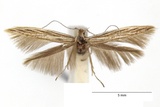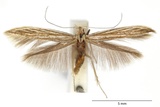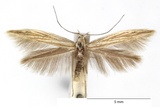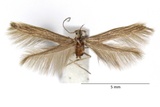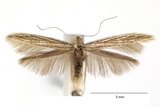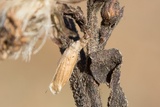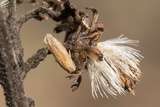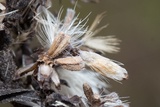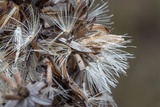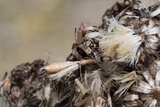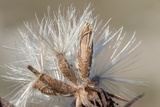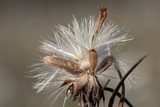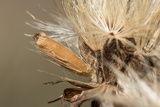Coleophora virgaureae Stainton, 1857 Species
Last modified: Dec. 11, 2023, 2:09 p.m.
Coleophora virgaureae has long been considered a synonym of Coleophora obscenella. However, Baldizzone & Tabell (2002) recognized these as distinct species. The first record, with the correct name Coleophora virgaureae, dates back from 1862 when cases were found on Solidago virgaurea at Groenendaal (Hoeilaart).
A very rare and local species in the southern part of Belgium, mainly known from the Calestienne.
Details
- Classification
- Family: Coleophoridae > Genus: Coleophora > Species: Coleophora virgaureae
- Vernacular names
- Guldenroedekokermot (NL), Golden-rod Case-bearer (EN)
- First mention in Belgium
- Fologne E. 1862c. Notes sur quelques lépidoptères observés en Belgique. — Annales de la Société entomologique belge 6: 170–176. On page 174. view page
- Status
-
Native
Distribution
Imago
The forewings are ochreous, often with a greyish shine. The longitudinal lines are pure white. A white costal line till 5/6 of the wing. There are blackish brown dots at the basis till half of the wing.
Wingspan is 12–15 mm.
The antennae are annulated light brown and white to totally white.
Case
The larvae live in a 5–6 mm long, tri valved, dark brown, silken case. The early case is light brown but changes rather quickly into dark brown. Therefore it is hard to find between the seed heads of the plant which have the same colour.
The mouth angle is 40–70°.
See also bladmineerders.be.
Bionomics
The eggs are deposited on the flowers of the host plant. The adults come to light.
Flight periods
The adults are on the wing from late July towards September.
Observed on
- Host plant (species):
- Solidago virgaurea, Tripolium panniconum and Aster linosyris
The larvae feed mainly on Solidago virgaurea and in Belgium it's also found regularly on Aster linosyris, also recorded on Tripolium pannonicum and Aster sedifolius.
